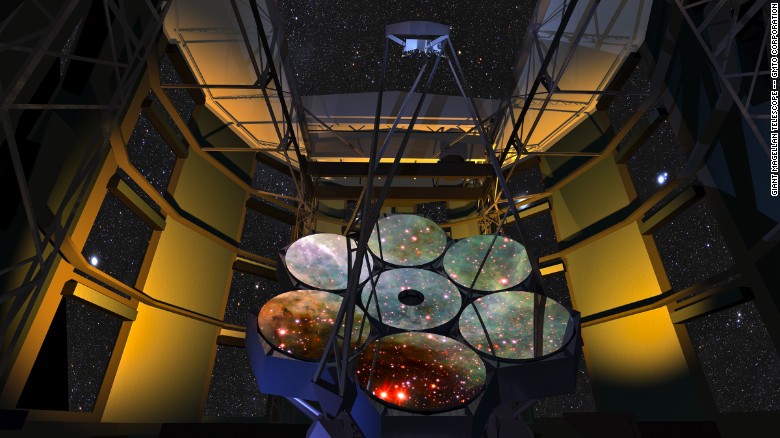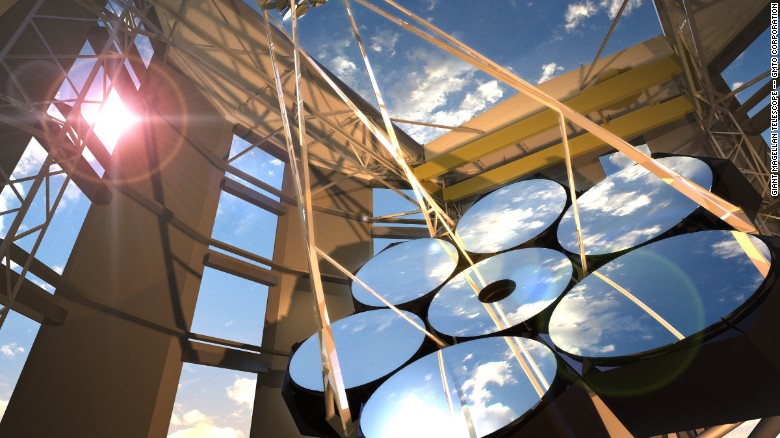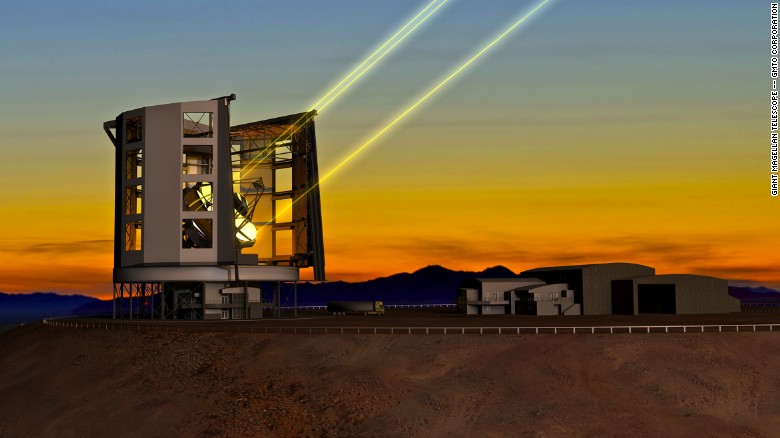World's largest telescope to explore universe's deepest secrets

(CNN)In
the vast expanse of the universe, we are still trying to find our
place. Is there anyone else out there? Where do we come from? Are there
other habitable planets like our own?
These are just some of the questions astronomers and scientists grapple with on a daily basis.
Now they're rolling out the big guns.
Astronomers are enlisting a massive new telescope on a mountainside at Chile's Las Campanas Observatory in their quest for answers.
The
Giant Magellan Telescope (GMT), will be the biggest Earth-based optical
telescope ever built, ushering in a new era of deep space exploration.
"The
GMT will herald the beginning of a new era in astronomy. It will reveal
the first objects to emit light in the universe, explore the mysteries
of dark energy and dark matter, and identify potentially habitable
planets in the Earth's galactic neighborhood," said Wendy Freedman,
chair of the Giant Magellan Telescope Organization (GMTO) board of
directors and university professor of astronomy and astrophysics at the University of Chicago.
"The
decision by the GMTO partner institutions to start construction is a
crucial milestone on our journey to making these amazing discoveries
using state-of-the-art science, technology and engineering," she said.
Sharper than Hubble
Not
only will the GMT be the largest optical telescope in the world but --
with its seven mirrors spanning a single reflective surface of 25
meters -- it will be able to produce spectacular images, 10 times
sharper than ones taken by the Hubble Space Telescope, GMTO says.
The
telescope will be built near existing large telescopes in a huge dome
structure 22 stories high in the dry air of Chile's Atacama Desert. Its
remote location will allow it to capture incredible images of the skies
above without being hindered by urban light pollution.
The
$1 billion telescope has secured half of its funding, thanks to its 11
international partners, and is expected to see first light in 2021,
becoming fully operational by 2024.
GMTO
president Edward Moses said: "The GMT is a global scientific
collaboration, with institutional partners in Australia, Brazil, Korea,
the United States, and in host nation Chile. The construction approval
means work will begin on the telescope's core structure and the
scientific instruments that lie at the heart of this $1 billion project.
"Early preparation for construction
has included groundwork at the mountaintop site at Las Campanas in
northern Chile, and initial fabrication of the telescope's seven
enormous primary mirror segments," he added.
The
GMT is to be the first in a new class of gigantic telescopes and the
scientists involved in the project are planning to focus their
activities on discovering Earth-like planets orbiting neighboring stars.
The telescope is also expected to detect light emitted shortly after
the Big Bang 13.8 billion years ago offering astronomers the opportunity
to look back to the dawn of the universe.
"The
new generation of big telescopes is pushing engineering to new limits
in the pursuit of incredible scientific discoveries. Larger mirrors let
us see fainter objects in more detail, which means we start to see
things for the first time that we only thought existed," said Robert Massey, deputy executive secretary of the UK's Royal Astronomical Society.
"In
the next few decades I'm confident that (even) bigger telescopes, like
the European Extremely Large Telescope, will help us answer some of the
big questions, telling us whether planets like our own are common in the
universe, and just what the first stars to form after the Big Bang were
really like."
Along with other telescopes designated for exploring the early universe, such as Hubble's successor, The James Webb Space Telescope
-- which is currently under construction and schedule for launch into
low-Earth orbit in 2018) -- the GMT's incredible mirrors are expected to
offer scientists the highest quality images of the universe ever
captured.
Massey added: "These giant
instruments are simply inspirational too. They encourage young people to
pursue careers in science and engineering, and the scientists and
engineers lucky enough to work on them apply those techniques for the
benefit of us all."
Courtesy: CNN




